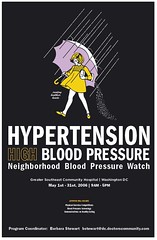The research is published in the Nov. 1, 2010 issue of Endocrinology.
Daniel Kapusta, PhD, Professor of Pharmacology at LSU Health Sciences Center New Orleans, and Richard Wainford, PhD, LSUHSC Instructor of Pharmacology, report the role of these brain proteins, called Gaq and Gaz, in producing elevated secretion of the hormone, vasopressin, and water retention in salt-sensitive hypertension, a condition in which blood pressure becomes elevated when salt is consumed. It is estimated that salt-sensitive hypertension occurs in about 26% of Americans with normal blood pressure and in 58% of those whose blood pressure is already high.
"Throughout the day, vasopressin, a peptide hormone produced by the hypothalamus, is released into the circulation from the pituitary gland and plays a vital role as the flood-gate keeper to prevent excessive loss of water from the kidneys," notes Dr. Kapusta. "Under most conditions, the water-retaining action of vasopressin is vital for survival. However, it has remained essentially a black box as to why, in susceptible individuals, the regulatory mechanisms that control vasopressin secretion cannot turn off when the body already has elevated water content."
For 21-days, the research team fed groups of male salt-resistant and salt-sensitive rats a diet containing either normal or high salt. Then they measured how the treatments influenced the animal's ability to excrete water and how the salt stress altered levels of vasopressin, Gaq and Gaz.
The consumption of high salt triggered a decrease in Gaq proteins in the brain of salt-resistant, but not salt-sensitive, rats. In salt-sensitive rats, the team demonstrated that reducing brain Gaq proteins returned plasma vasopressin to normal levels, decreased salt-induced water retention, and restored the animal's ability to excrete water.
"Our findings are novel and provide evidence that the Gaq sub-unit proteins in the hypothalamus act as a molecular/cellular switch to control the level of vasopressin secretion," says Dr. Wainford.
The researchers concluded that reducing brain Gaq proteins plays a critical counter-regulatory role in preventing the secretion of too much vasopressin in those with salt-resistance and may represent a new therapeutic target in diseases associated with fluid retention.
Story Source:
The above story is reprinted (with editorial adaptations by ScienceDaily staff) from materials provided by Louisiana State University Health Sciences Center, via EurekAlert!, a service of AAAS.
Journal Reference:
R. D. Wainford, D. R. Kapusta. Hypothalamic Paraventricular Nucleus Gaq Subunit Protein Pathways Mediate Vasopressin Dysregulation and Fluid Retention in Salt-Sensitive Rats. Endocrinology, 2010; 151 (11): 5403 DOI: 10.1210/en.2010-0345Note: If no author is given, the source is cited instead.
Disclaimer: This article is not intended to provide medical advice, diagnosis or treatment. Views expressed here do not necessarily reflect those of ScienceDaily or its staff.
